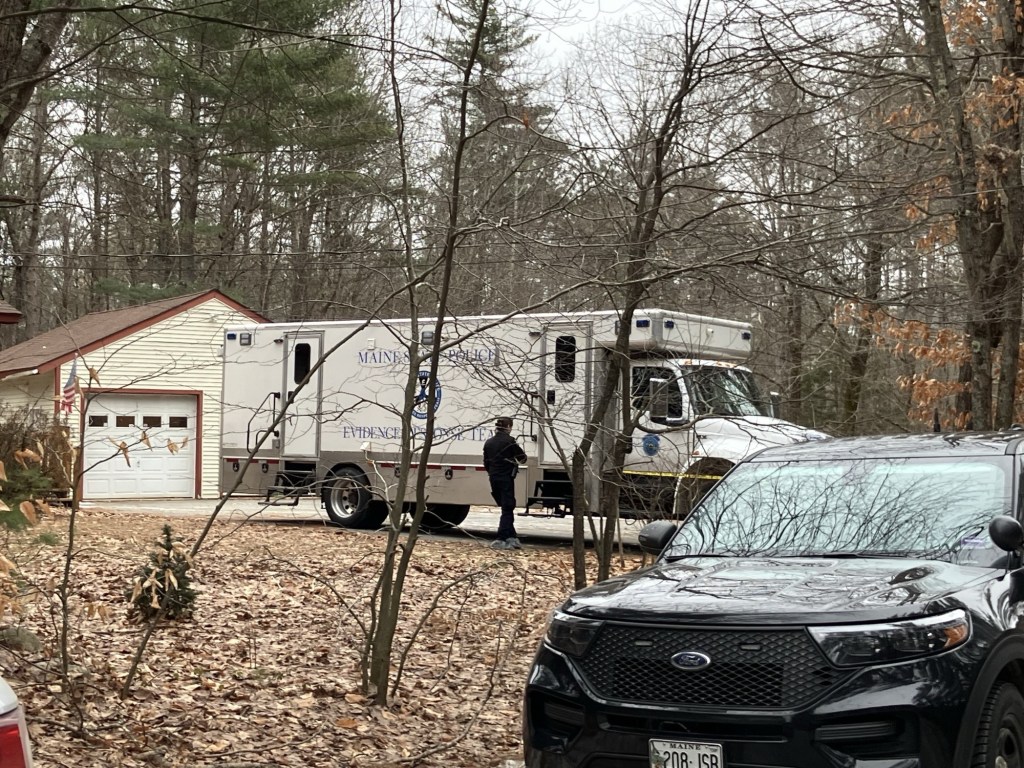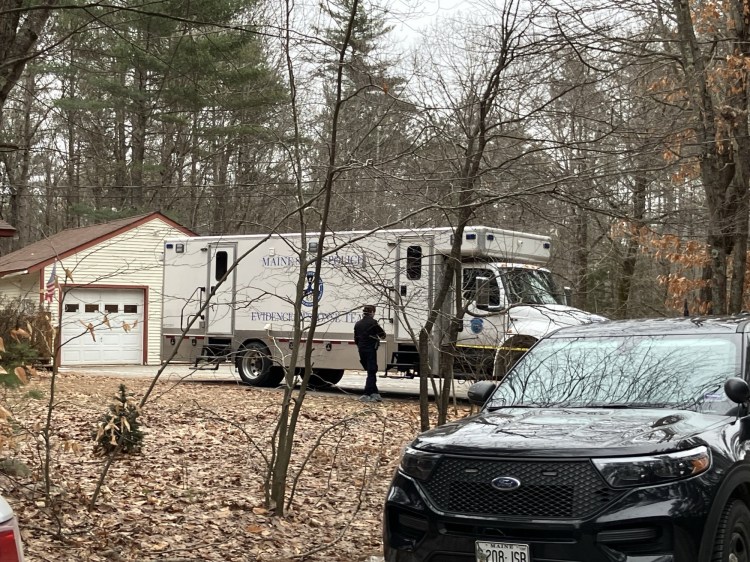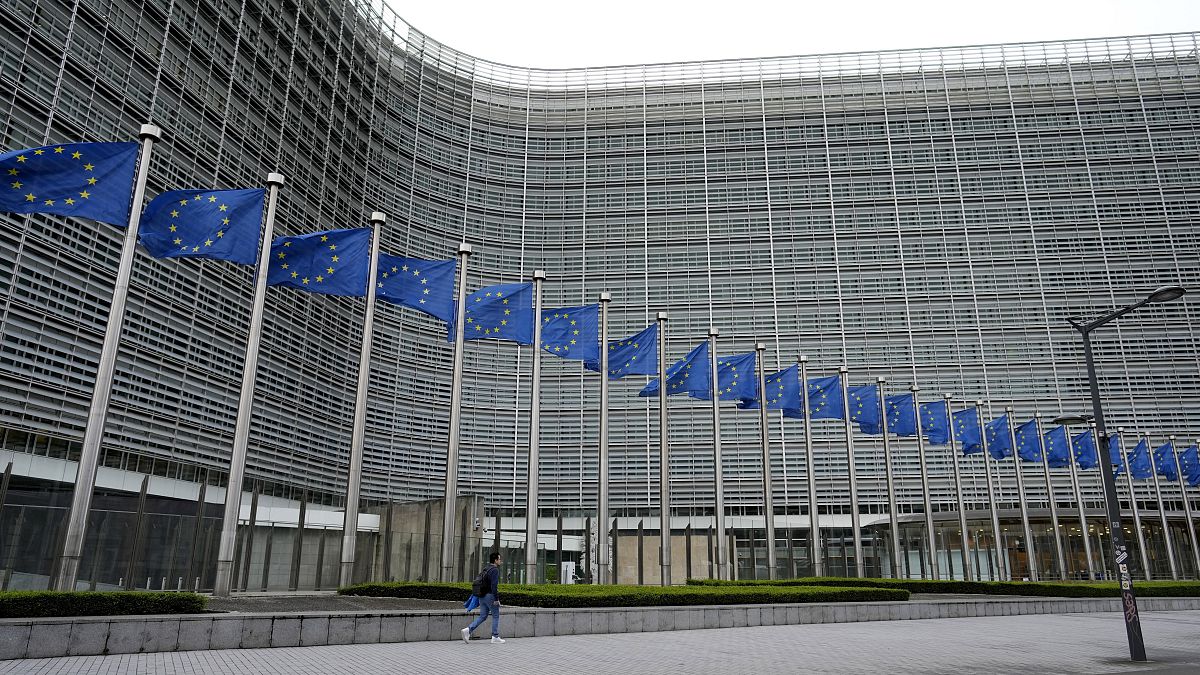Maine
2 Maine men arrested in connection with Sanford stabbing

Fri, 29 Sep 2023 14:45:12 GMT (1695998712871)
709ee95582598429b00a59d2abab41b65c2ae2db
ea2afc069eda94e93559a101774a741c91bc06fb

- News
- Weather
- On Your Side
- Features
- Game Center
- Watch
Now
55
Sat
66
Sun
76


Jordan Roberge (left) and Derrick Roberts-Poulin (Sanford Police Department)
Loading …

Maine
Killing of Sidney teen leaves community asking questions


A home at 2005 Summerhaven Road in Sidney on Saturday is clear of the police tape that cordoned it off Friday while Maine State Police and local officers investigated the killing of a 14-year-old boy. A woman was arrested after reporting to the Androscoggin County Sheriff’s Office that a crime had occurred at the home early Friday morning. Ethan Horton/Kennebec Journal
SIDNEY — One day after a woman was arrested in connection with the homicide of a 14-year-old boy, residents of a residential neighborhood were left with more questions than answers, as police continued to withhold information about the boy and what exactly happened.


Police had left 2005 Summerhaven Road in Sidney by Saturday morning. There was little sign of the daylong investigation at the home Friday as snow flurries fell on a bitterly cold day.
Brady Maheux, 25, said he has lived his whole life on the windy, residential road near the Augusta-Sidney line, but did not know the people who lived in the house under investigation Friday.
“How does something like that happen?” said Maheux. “What the hell happened? It’s crazy.”
Megan McDonald, 39, was arrested Friday afternoon and charged with murder, Maine State Police said in a statement issued Friday evening. The arrest came after police found a 14-year-old boy dead outside the Summerhaven Road residence, state police said.


Megan McDonald Courtesy of Kennebec County jail
The Office of Chief Medical Examiner in Augusta determined the cause of the boy’s death as “a combination of asphyxiation, manual strangulation, and sharp force injury,” according to state police. The medical examiner’s office also ruled the manner of death as homicide.
Investigators were seen throughout the day Friday working at 2005 Summerhaven Road, a single-story home, with a detached garage flying a U.S. Marine Corps flag.
Town tax records list the property’s owner as Megan McDonald.
State police said they were called to investigate after Kennebec County sheriff’s deputies conducted a wellbeing check and found the dead teenager. The deputies were asked to conduct the check after a woman reported an incident at her home to the Androscoggin County Sheriff’s Office, according to state police.
Why the incident was reported there was not known Saturday. Just before 5:30 a.m., “an adult female arrived at the Androscoggin County Sheriff’s Office to report an incident that occurred at her home,” state police said Friday.
The Androscoggin County Sheriff’s Office, in Auburn, is about a 40-mile drive from the Summerhaven Road residence in Sidney, according to GPS mapping.
Androscoggin County Sheriff Eric Samson wrote in a message Saturday the woman who reported the crime in the Sheriff’s Office lobby was taken into custody, though he did not release that woman’s name. Samson referred further questions to a state police spokesperson.
Before police announced the homicide investigation Friday, Carl Gartley, superintendent of Regional School Unit 18, had sent an announcement to community members earlier in the day that a Messalonskee High School student had died. Sidney is one of the towns served by the Oakland-based district.
“Due to an ongoing police investigation, we are unable to release a name at this time,” Gartley wrote Friday.
Police and school district officials remained tight-lipped about the 14-year-old boy’s identity through the weekend, and it was not clear if the Messalonskee student who died was the one found dead on Summerhaven Road.
“I was hoping to release the name yesterday (Friday) but it’s ultimately up to the AG’s Office,” Shannon Moss, public information officer for the Maine Department of Public Safety, wrote in an email Saturday.
A spokesperson for the Office of the Maine Attorney General, which prosecutes all homicides in the state, did not respond to a message Saturday.
A woman retrieving her mail outside her home on Birch Circle, around the corner from the Summerhaven Road residence, said she knew the boy killed in the alleged homicide, but did not want to share any details publicly about him or provide her name until police release the name.


Several state police cruisers and a large Maine State Police Evidence Response Team box truck are parked at 2005 Summerhaven Road in Sidney on Friday afternoon. State police say they discovered the body of a 14-year-old outside of the home early Friday morning. Megan McDonald, 39, was taken into custody and charged with murder. Keith Edwards/Kennebec Journal
Another man, who has lived on Birch Circle for about 30 years, said he was cordial with the people that lived at the home where police were investigating but did not know them well. He was not sure how many people lived there and never knew them by name.
He called them “decent folks” and said he would see them if their dog got loose or when he was walking his dog in the area.
“There has been nothing that would’ve led you to believe there was anything wrong,” said the man, who declined to give his name because he did not want attention from other neighbors for speaking to the news media.
“Had we known, would we have done something?” he continued. “Of course.”
At several other nearby homes, residents either were not home Saturday morning or did not answer the door. Others who did answer the door said they did not know much beyond the information released by state police.
Maheux, the 25-year-old Summerhaven Road resident said he did not even hear or see police investigators arrive in the morning.
“I believe I was awake at that hour when they had gotten there,” Maheux said. “I never heard anything in the morning hours either.”
It is usually a quiet neighborhood, he said. “Nothing goes on out here.”
A neighbor of Maheux, who declined to provide his name, said the same, but recalled at least one other major incident nearby in recent years: a double homicide of an Augusta couple, found dead in the woods in Manchester, on Christmas Day in 2015. That killing was found to be related to drug dealing.
More information about Friday’s alleged homicide could emerge Monday, when McDonald would likely appear in court. If she remains in custody Monday, McDonald would be expected to make an initial court appearance in Kennebec County.
At that initial appearance, usually a brief hearing, a judge would read McDonald the charge against her. McDonald would not be required to enter a plea then, since prosecutors first need to present their case to a grand jury for an indictment before it could move forward.
It was not known Saturday if McDonald has an attorney. That information in Maine is only available through court clerk’s offices, which are closed on the weekends.
At Messalonskee High School in Oakland, about 14 miles north of the Sidney neighborhood, counseling sessions were available from 9-11 a.m., according to the announcement from school administrators.
Around 1 p.m., it was quiet around the school as a snow flurry fell. Only a handful of cars were in the parking lot, and there were no signs of any kind of memorials placed by community members.
“As we travel through our break, if you are in need, please do not hesitate to reach out for support,” the high school said in a Facebook post Saturday. “We are Messalonskee Strong.”
The post offered several resources:
• National Alliance on Mental Illness Maine: 1-800-464-5767, info@namimaine.org, call or text 988
• The Crisis Text Line: text “Home” to 741-741
• Crisis and Counseling Centers: 1-888-568-1112 or 207-626-3448
Sun Journal reporter Joe Charpentier contributed to this report.
Maine
What’s the best Maine Hallmark Christmas movie? 8 movies ranked based on reviews

Get an inside look at Hallmark’s first ever Christmas themed Cruise
USA TODAY’s Erin Jensen gives us an inside look what it was like to experience the first ever Hallmark Christmas themed cruise on the Norwegian Gem.
As the harsh winter weather sends New Englanders to celebrate the holidays indoors, there is no better way to get in the festive mood than with a blanket, a mug of hot cocoa and a holiday movie – and for Hallmark, there is no better setting for a holiday movie than a small New England town.
In fact, many of the channel’s holiday films are set in Maine. Whether set in real towns like Bristol or the fictional St. Ives, the aesthetic snowy backdrop and charming small-town feel Maine is known for make the state the perfect setting for a feel-good holiday flick.
Here are 8 Hallmark Christmas movies set in Maine that are available to watch this season, in order of worst to best rankings from IMDb.
In “Nostalgic Christmas,” Anne returns home for the holidays to the fictional town of North Bay, Maine to help her dad sell his toy store and retire from his wood-carving career. When Anne must co-chair the town’s Christmas celebration with handsome widower Keith, she questions whether her future is back in New York or right there in her hometown.
IMDb rating: 6.3
Where to watch: fuboTV, Prime Video premium, Hallmark+, 1/1/25 at midnight on the Hallmark Channel
“The Wishing Tree” follows Evan Farnsworth, a professor at a boarding school in Maine who offers to teach the students left behind during Christmas vacation. After one of the students gets into trouble and threatens Evan’s job, a magical wishing tree decorated with handwritten Christmas wishes brings the professor and his students closer together.
IMDb rating: 6.3
Where to watch: Peacock, Pluto TV, fuboTV, Prime Video premium, Hallmark+
After breaking up with her longtime boyfriend and getting short term amnesia, Lucy returns home to the fictional Bedford Harbor, Maine for the town’s Christmas celebration, where she rediscovers herself.
IMDb rating: 6.5
Where to watch: fubo, Prime Video premium, Hallmark+, 12/28 at 8 p.m. on the Hallmark Channel
Set in Bristol, “Cranberry Christmas” tells the story of separated couple Dawn and Gabe who pretend to be happy in their marriage to help save the town’s annual Christmas Cranberry Festival put on by their family cranberry farm.
IMDb rating: 6.5
Where to watch: Prime Video premium, Hallmark+, 12/24 at 8 a.m. on the Hallmark Channel
“Let it Snow” follows Stephanie, a resort executive played by Candace Cameron Bure of “Full House,” as she prepares a renovation proposal for Snow Valley Lodge, a Maine resort which her father’s resort company has just acquired. Faced with tension with the property guide Brady, the need for approval from her detached father and a Christmas Eve deadline, Stephanie must decide whether she wants to continue in her Grinch-like ways or embrace Christmas tradition and “let it snow.”
IMDb rating: 6.6
Where to watch: fuboTV, Philo
New this year, “A Novel Noel” tells the story of a burnt out book editor from New York City who takes a temporary job at a bookstore in fictional St. Ives, Maine over the holidays. While there, she rediscovers her passion for creativity and finds love with the annoying son of the bookstore’s owners.
IMDb rating: 6.6
Where to watch: fuboTV, 12/27 at 8 p.m. on the Hallmark Channel
In “Fallen Angel,” successful Los Angeles lawyer Terry must return to his estranged father’s home in Maine after he passes, leading Terry to confront his traumatic memories and reconnect with a woman from his past.
IMDb rating: 7.0
Where to watch: Pluto TV, PLEX, Prime Video premium, Hallmark+
Taking the highest ranking for Hallmark Christmas movies set in Maine is “Time for Them to Come Home for Christmas,” which follows a woman with amnesia as she travels from a hospital in fictional Covington, Maine to a Christmas tree lighting in South Carolina in hopes of rediscovering her identity.
IMDb rating: 7.2
Where to watch: Prime Video premium, Hallmark+, 12/26 at 6 p.m. on the Hallmark Channel
Maine
Why overdose deaths are declining in Maine

Maine is set to close out 2024 as a year that saw a continued decline in drug overdose deaths. But while the top official responsible for coordinating the state’s response to the opioid crisis is glad to see the trend, he’s not celebrating.
That’s because the approximately 500 total overdose deaths projected for this year is still far too high, Gordon Smith, Maine’s director of opioid response, said in an interview.
“One death is too many, but 500 is a catastrophe. It’s simply better than 720 [in 2022],” he said, referring to the year when Maine saw its greatest number of overdose deaths.
Across Maine, 405 people died after overdosing between January and October, according to the Maine Drug Data Hub. That official count represents a 20 percent decrease compared with the same time period in 2023. It continues the decline first seen in 2023, when fatal overdoses decreased 16 percent compared with 2022.
The reasons for the decline are not truly known, Smith said, but it is probably at least partially due to the decreasing potency of fentanyl, a powerful manmade opioid that is the most frequent cause of death. There are also more services in Maine to help people with an addiction to opioids than in the past.
The Bangor Daily News spoke with Smith about the changes he has seen since his position in state government was created in 2019, after fentanyl turned Maine’s ongoing opioid crisis even more deadly. From distributing hundreds of thousands of doses of overdose-reversing naloxone, to training more than 2,000 people as peer recovery coaches, to expanding access to treatment, Maine has significantly boosted help for people who need it, Smith said.
For instance, more than 5,000 people are currently receiving methadone, the most ever, Smith said. Providers in Maine are also prescribing a record 16,000 to 20,000 people with buprenorphine, another medication for opioid use disorder. While people can have success with an abstinence-based approach to treatment, he said, medications such as methadone and buprenorphine have been shown to increase people’s odds of staying in long-term recovery.
The following Q&A has been condensed:
Gordon Smith, state of Maine: I think one of the reasons that this is all going better now is that so many people are willing to take some help medically, and we’ve really encouraged the medical community to step up and make that available in all the primary care practices, in all the emergency departments — low-barrier access to buprenorphine. We’re only down to three to five [predominantly small, rural] emergency departments in Maine that aren’t ready to do that, and we’re working with them to make sure that they do get ready to do it.
Erin Rhoda, BDN: I don’t know that any ERs a number of years ago were prescribing buprenorphine. Is that right?
Smith: None were.
You’re recalling, in Executive Order 2, which established my position in February of 2019 … we said the first thing I’m going to do is buy 35,000 doses of naloxone. … Now it’s truly the thing that’s making the biggest difference in keeping people alive. The data in [the state’s monthly overdose report] is startling: 95 percent of people that overdose in Maine today are surviving their overdose. That’s remarkable. …
The second thing we said in that executive order, after we purchased 35,000 doses of naloxone, was we were going to ask every emergency department to have low-barrier access available to buprenorphine, to any patient that came in after an overdose or was otherwise struggling with substances. …
One of my favorite things in that executive order was we asked every prison and facility and every jail to make sure that people who had a substance use disorder were treated for their illness and had medication available, meaning buprenorphine generally.
Because it’s just stunning, as a health care lawyer, that in 2019, two decades after the Americans with Disabilities Act, that people with substance use disorder were not treated when they were incarcerated. And that’s still true in the majority of carceral settings in this country. …
Almost 50 percent of the [inmates in Maine’s prison system] are on medication for substance use disorder. Which sounds like an insane amount except we know that 70 or 80 percent of them have a substance use disorder. In many of the jails also the numbers are up around 50 percent, sometimes more.
Rhoda: Are all jails now offering treatment?
Smith: They’re all offering treatment. They’re all offering medication. They’re not necessarily all offering the injectable version of buprenorphine. The goal would be to offer all [U.S. Food and Drug Administration] approved products for substance use disorder and in all of their versions — injectable, film, pills, whichever works for that particular resident of the jail, but almost no jail or facility at this point is able to offer all those versions.
Rhoda: [The jails offering medication] seems like a huge change.
Smith: There’s not a single facility, Erin, that is where we’d like to have them right now, but they’re all way, way better than it was. The reason that they’re not further along is really resources. … We’ve made some more state money available to them. The governor did $4 million in the last budget, more money for the jails for these purposes, but it really is an issue of resources.
And you know, in the grand scheme of things I’d really prefer to not see people with substance use disorder in jail. I’d like to see a lot more diversion. …. The treatment courts are trucking along. We’ve got one in … every county except Aroostook County, and we’ve got a great plan up there that Todd Collins, [the district attorney], and a whole bunch of people worked on, but we need $750,000 a year to do it, and nobody has come up with that money. So we’ll try again.
Rhoda: I also remember when there were no detox beds [at facilities that medically supervise people through the acute stages of withdrawal].
Smith: We now have about 120, 130 detox beds because we’ve also been successful in getting the private places to open some beds to MaineCare, like Pine Tree in Portland and Libby Bay. We’ve got 10 beautiful Wabanaki beds [in Bangor] … but they’re not full. I think part of it is communicating to people who might need those beds that they’re not just for Indigenous Mainers, number one, and that they’re open for business.
Rhoda: When it comes to the overdose death rates, are you seeing really big declines in certain areas? Where in Maine have you seen the biggest declines?
Smith: Actually in Portland. It has not been uniform across the state. There are some counties that will see more deaths this year than last year. They tend to be smaller numbers, but still. …
We’ve seen the biggest decline really in the urban areas, and we’ve not done as well in reducing overdoses in some of the rural areas. We need to do a better job there. Some of it is hard to address. It takes a long time to get an ambulance out to Springfield, Maine, 20 miles east of Lincoln, right? Fentanyl acts very quickly. Too many people use alone. Why do they use alone? There’s a lot of shame and stigma associated with it.
Rhoda: Stimulants are continuing to increase as a cause of death in combination with other drugs like fentanyl. What do you make of that, why that’s happening?
Smith: I don’t think anybody knows. Not a week goes by that we’re not on some webinar with our federal partners and national people; we get together with our New England group all the time, we talk about these things. Nobody really knows. People don’t even know why the death rate is declining. We speculate.
There’s a North Carolina drug lab run by Dr. [Nabarun] Dasgupta. He posited eight different theories [for the decline in overdose deaths]. They all made sense to me: more naloxone, more treatment available. …
Now xylazine [a sedative added to fentanyl that is not as lethal] is a factor. We’re up to 14 to 16 percent xylazine. Oddly enough it might be some of these fillers that are helping to keep people alive. It’s still doing really bad things to them, you know, but they don’t die.
Rhoda: With xylazine, that’s a relatively new thing. Do you think that that filler is playing a role in the declining number of deaths?
Smith: It is one of the things that the researchers are speculating that may be part of why fewer people are dying. …
The fact is that nationwide we’ve seen a 10 to 12 percent decline, and not every state is doing what we’re doing, right? In some of the New England states, probably New Hampshire and Maine have seen the sharpest declines. But every state has seen some improvement. So it’s more than just what we’re doing.
Rhoda: Where does Maine stand exactly in its decrease of opioid deaths relative to the nation? We are falling faster?
Smith: Yes, but we were also higher to start with. We started from a pretty bad place in 2018, 2019. And so we’re coming down now towards the middle.
Rhoda: I’ve been reading about the declining toxicity of fentanyl. The fentanyl on the street is becoming weaker. Is that happening in Maine?
Smith: Probably. We don’t necessarily have enough drug checking and drug testing to know that. … It’s funny because we used to talk about fentanyl adultering everything else; now people want fentanyl, and it’s being adulterated with everything from xylazine to other fillers, including cocaine and meth.
So, again, we don’t have the sophisticated kind of drug-checking apparatus. We’ve got four new drug-checking machines that are just starting to be used. There’s one in Machias, one in Sanford, as part of Project DHARMA. It’s a federal grant run out of the Maine Medical Center. …
The whole idea is we’re going to start testing residual amounts of drugs — in syringes usually — at various sites around the state and then get that to the Colby drug lab and see what’s in these drugs. That will give us maybe a head start on what kind of drug policies we need in the state in reaction to that. So it’s possible in a year or two when you ask me the question about the strength of the fentanyl that I’d have actually good chemistry to answer that question, but it’s just starting.
Rhoda: What do you think next year will bring?
Smith: I don’t think we need a lot of new initiatives, but I think we need to put more resources into all the things we’re doing. We had one crisis receiving center [to help people with a range of mental health or substance use challenges]. Now we’re going to have five. We had three McAulay houses [for women in recovery and their children]. Now we’re going to have seven. We’ve got 1,000 recovery beds [at about 100 recovery residences]. We need probably 200 more in rural areas.
We need to just keep doing what we’re doing, lower the stigma, let people know we care about them, give them hope, and make sure when they’re ready today that we’ve got a bed for them, or an outpatient facility, whatever they need. That’s my hope.
Rhoda: A final note here: What do you want families to do if they have a loved one with addiction? If they’re reading this and they think, I really need to do something, what is your advice?
Smith: There are support groups for family members. We have 24 recovery community centers now. Call 211. Don’t suffer in silence alone, and don’t give up on your loved one.
Erin Rhoda is the editor of Maine Focus and may be reached at erhoda@bangordailynews.com.
-

 Politics1 week ago
Politics1 week agoCanadian premier threatens to cut off energy imports to US if Trump imposes tariff on country
-
/cdn.vox-cdn.com/uploads/chorus_asset/file/25782636/247422_ChatGPT_anniversary_CVirginia.jpg)
/cdn.vox-cdn.com/uploads/chorus_asset/file/25782636/247422_ChatGPT_anniversary_CVirginia.jpg) Technology1 week ago
Technology1 week agoInside the launch — and future — of ChatGPT
-
/cdn.vox-cdn.com/uploads/chorus_asset/file/25789444/1258459915.jpg)
/cdn.vox-cdn.com/uploads/chorus_asset/file/25789444/1258459915.jpg) Technology1 week ago
Technology1 week agoOpenAI cofounder Ilya Sutskever says the way AI is built is about to change
-

 Politics1 week ago
Politics1 week agoU.S. Supreme Court will decide if oil industry may sue to block California's zero-emissions goal
-
/cdn.vox-cdn.com/uploads/chorus_asset/file/25546252/STK169_Mark_Zuckerburg_CVIRGINIA_D.jpg)
/cdn.vox-cdn.com/uploads/chorus_asset/file/25546252/STK169_Mark_Zuckerburg_CVIRGINIA_D.jpg) Technology1 week ago
Technology1 week agoMeta asks the US government to block OpenAI’s switch to a for-profit
-

 Politics1 week ago
Politics1 week agoConservative group debuts major ad buy in key senators' states as 'soft appeal' for Hegseth, Gabbard, Patel
-

 Business6 days ago
Business6 days agoFreddie Freeman's World Series walk-off grand slam baseball sells at auction for $1.56 million
-
/cdn.vox-cdn.com/uploads/chorus_asset/file/23951353/STK043_VRG_Illo_N_Barclay_3_Meta.jpg)
/cdn.vox-cdn.com/uploads/chorus_asset/file/23951353/STK043_VRG_Illo_N_Barclay_3_Meta.jpg) Technology6 days ago
Technology6 days agoMeta’s Instagram boss: who posted something matters more in the AI age



















